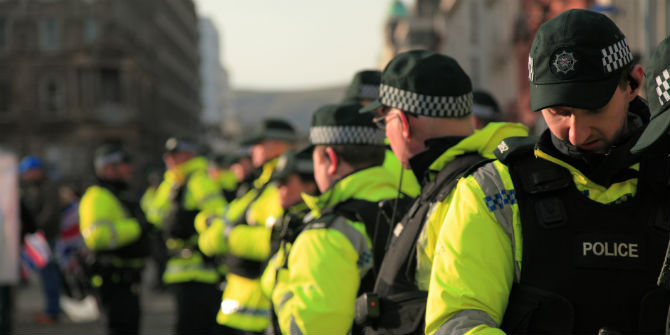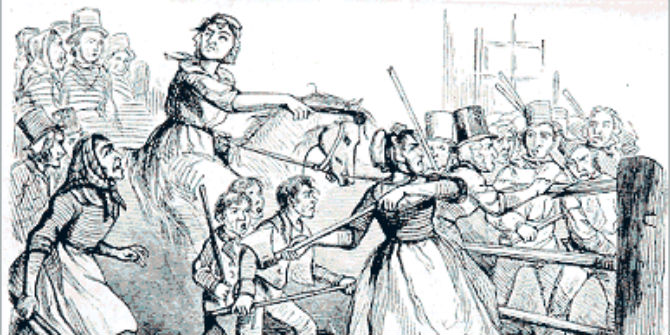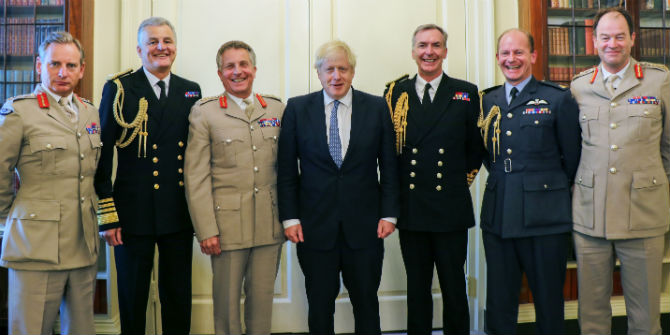We still have little idea what the customs arrangements on the border between Ireland and Northern Ireland will be after 29 March. A border control expert explains why the border is so crucial and sets out the scale of the task customs and other regulatory bodies on both sides of the border will face.
If the United Kingdom leaves the EU as scheduled, the EU will treat it as a “third country” – with inevitable consequences for border controls between Ireland and Northern Ireland. The extent of these controls will be determined by the terms of the UK’s withdrawal. While the primary impact will be felt in the area of customs controls, a range of other regulatory controls, including agriculture, marine, health, environmental and plant health may come into play.

In the worst case scenario of a no-deal Brexit, the customs relationship between UK and Ireland could, in theory, be compared with that which exists between eastern EU states and their non-EU neighbours – for example, Hungary and Ukraine, or Bulgaria and Serbia.
The stated position of both British and Irish politicians, as well EU officials, is that there is no desire to see a return to the Irish land border controls which operated before both countries became members of the Single Market in 1993. It has been suggested that an “invisible” border without a physical infrastructure, but relying on technology such as Automatic Number Plate Recognition (ANPR), could operate.
Comparisons have been drawn with the existing Norway/Sweden relationship, which allows for certain simplified procedures for movement of people and trade between these states. However, a critical factor in the free movement of people in this region is that both countries are members of the Schengen area. Article 41of the Schengen Convention provides for cross-border pursuit by police forces. Neither the UK nor Ireland is a Schengen member. In terms of trade movements, Norway is a member of European Economic Area and European Free Trade Association and therefore enjoys certain Single Market trading conditions. Despite this both Norway and Sweden operate controls – including some cargo inspection – along their shared border, with a requirement that trade movements pass through one of the several border customs stations.
Technologies such as ANPR and CCTV are used at these border crossings, but as with a wide range of technologies available to customs, they are seen by practitioners as a means to enhance border controls rather than to replace them.
The presence of any fiscal or economic border provides opportunities for smuggling and other forms of criminal activity. The political situation in NI adds an extra dimension to a land border scenario. Serious organised crime groups continue to smuggle and deal in tobacco, alcohol and prescription medicines. Effective border controls and law enforcement measures will be required to prevent escalation of these activities. The PSNI has outlined plans to recruit and deploy an extra 300 officers to police the border, but the Irish government has said that it has no similar contingency plans to increase Garda numbers in the border area.
Broadly speaking, customs border controls can be broken down into two main areas – (i) measures to combat smuggling, and (ii) facilitation of legal trade movements.
Globally, customs and border guards are relied upon as the first line of a country’s border protection. While anti-smuggling controls are not confined to the frontier area, the further from a border they are deployed the more resource-intensive and less efficient they are – particularly if operating without first-level controls at the border.
In terms of trade facilitation, the use of electronic declarations and advance information, certification of Authorised Economic Operators (AEO) and provision of inspection facilities at locations removed from the border can all help to ease cross-border trade difficulties. However, it is highly unlikely that all importers/exporters shipping cargo across the Irish land border will be in a position to qualify for such simplified procedures. Moreover, much of the cross-border trade takes place within a short geographical distance of the border and to carry out any required physical inspections at locations remote from it would be quite impractical.
Interestingly, the Irish government’s contingency plan for a no-deal Brexit provides for significant border control capacity increases at Dublin and Rosslare ports, as well as Dublin airport, but makes no provision for land border facilities. It is not clear how differing levels of control might be deployed between sea, air and land borders, especially if they are to satisfy requirements for safeguarding the EU`s external borders.
From a UK perspective, any ‘light touch’ approach is completely at odds with the Brexit ambitions of strengthening immigration controls and “taking back control of our borders”. Moreover, it might not be sufficient to comply with World Trade Organisation rules.
Whatever form of Brexit takes place – and with just over 10 weeks to go until the planned withdrawal date – it is clear that a great deal has to be done in very little time to put appropriate controls are in place. When the exit terms become known, the UK Border Force and the Irish Customs must finalise their respective border control strategies. They must complete their respective recruitment campaigns, security clear, train, and deploy their officers. Accommodation and inspection facilities must be sourced and put in place, taking all planning and environmental requirements into account. A procurement process for each type of equipment must be carried out – and approvals for use of certain types of equipment may need to be obtained. Suitable communication and IT systems must be put in place. Clear engagement must take place with members of the public, trade bodies, agricultural and fishing interests, hauliers and logistics companies, to name but a few. In the case of prospective AEO traders, applications must be assessed, bank guarantees entered into and approvals granted (the current AEO approval process is set at 120 days).
The fact that little corporate knowledge and experience of controlling a land border exists on either side of the border will not help matters. We are running out of time.
This post represents the views of the author and not those of the Brexit blog, nor the LSE.
The author is an international expert on border controls with first-hand experience of the Irish land border.







This article clearly sets out the legal position and some of the technical requirements but the question must be asked – who will actually carry it all out? The British government has solemnly undertaken not to introduce new checks at the Irish border in any circumstances. While the EU Commission has now said border checks are inevitable in the event of “no deal” would the Irish government carry this out? Already embarrassment has been caused by an Irish Minister referring to border checks in the event of “no deal” and being slapped down by the Tanaiste. It is hard to envisage non-Irish EU officials being drafted in to do this work!
I hasten to say I am not raising this as an advocate of hard brexit or any other brexit for that matter. I am a signed up remainer. However the question has to be asked.
Denis, there is a big difference between the Irish government agreeing to a hard border, political suicide for it, and the Irish government putting up a hard border if forced to by the actions of the UK. The controls at any such border – agricultural inspections etc – would also be mirrored at Calais – cue chaos, as we’ve heard.
Any unrest at the “Irish” border would most probably be confined to N Ireland – ie another UK problem.
The Irish government has been working for two years – including new ferry routes into the EU – to mitigate any effects from a hard border – the UK, not so much.
With the EU supporting Ireland, who blinks first?